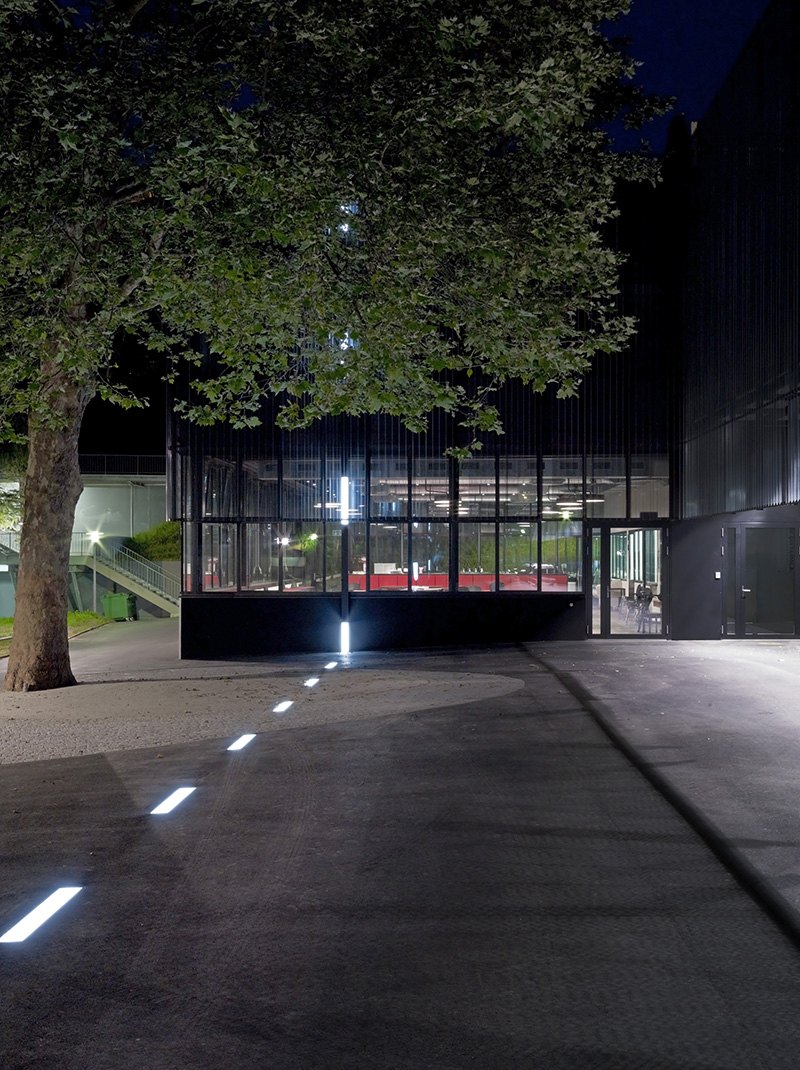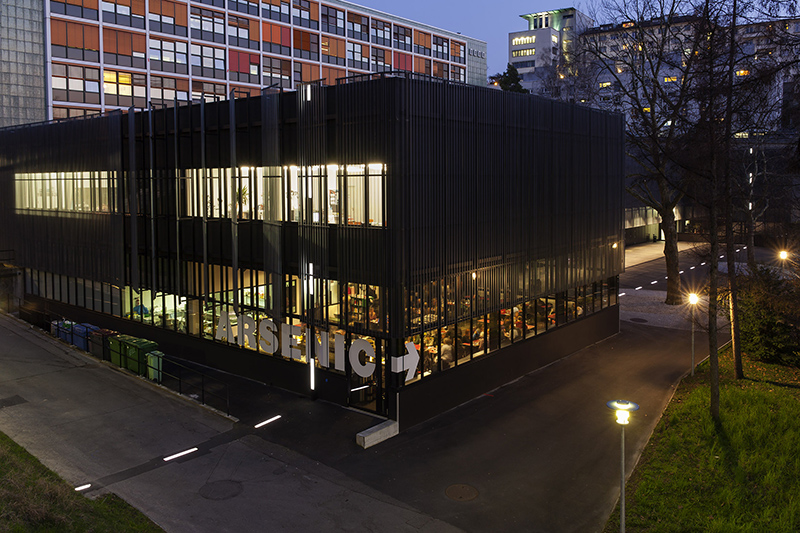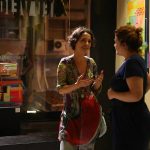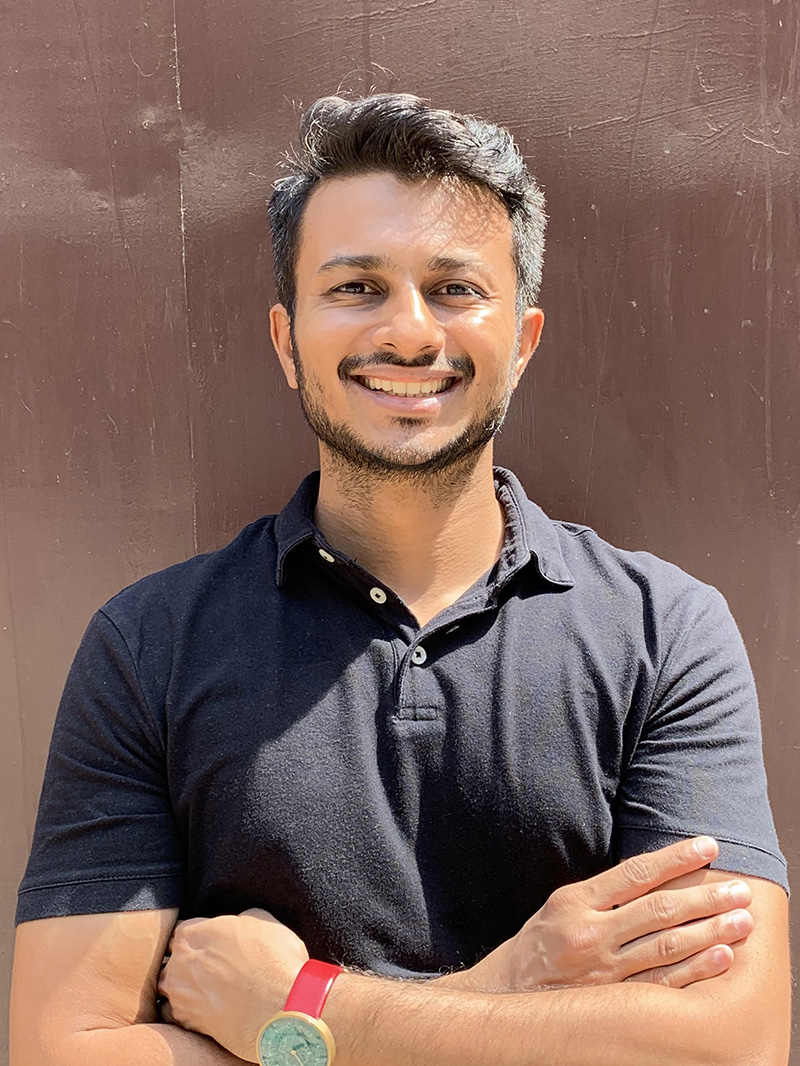Contemporary artist Sophie Guyot works on large site-specific installations, mounting and dismantling artworks all over the world. Her adaptability to different cultures and climate is shaped by a simple mantra: less is better.
I don’t have the answers and I don’t like dogmatism. I think we humans don’t know anything, so we can only have incomplete answers to our investigations. What I like most is making connections between things, drawing attention to little elements, suggesting that there is a lot around us, that we do not see because we humans are not equipped for that. I find this idea fascinating, because it opens the door to an infinite world.
Featured image by Peter Sierigk.

Take us to the beginning of your story. How did your tryst with art begin?
I was born in the country in the ’70s, and was the eldest of three children. My mother bred horses and my father was an architect. As children we had a lot of freedom. When I did not have school, I spent the day with my siblings building cabins, inventing stories in the forest, racing bikes, bobsleigh in winter, playing with the dog and taking walks with our ponies. There was also an artistic side to all those children’s activities. We had, in our big house, a space devoted to ‘DIY’, where we could invent all kinds of things – paintings, collages, we assembled various material found in trash, we “borrowed” the kitchen utensils from my mother for indefinite periods in order to mix plaster, molten lead, resins.
This is to tell you that I have actually always been in an artistic practice ever since I was a child. I was the kind of kid who would dismantle the radio to see how it is inside, or build a wooden hut on the terrace, which takes half of the space and weighs tons. My parents have always been incredibly indulgent towards me, for which I thank them even today.
As a young adult, however, when it came to choosing a profession, I did not dare to study in an art school. In fact, I was afraid that I would then feel “obliged” to become an artist! Did I really have something worth saying? I now realise that I need total freedom to be able to create. Art studies would definitely have put too much pressure on me and I feared I wouldn’t be up to the task. So, I finally opted for art history and Russian literature. For quite some time I worked for the film industry, and much later, as a young mother, I returned to artistic activities. Having two young children meant I no longer felt any pressure. I no longer felt compelled to reach excellence, and besides, what excellence were we talking about? And naturally and uninhibitedly, I finally embarked on this practice in 2006.

What is the primary role of an artist? How do you describe yourself in the context of challenging people’s perspectives via your work?
I can’t really say what the role of an artist must be in general. However, I can talk about what motivates me. In my work I especially like to ask questions, in a literal or poetic manner. I don’t have the answers and I don’t like dogmatism. I think we humans don’t know anything, so we can only have incomplete answers to our investigations. What I like most is making connections between things, drawing attention to little elements, suggesting that there is a lot around us, that we do not see because we humans are not equipped for that. I find this idea fascinating, because it opens the door to an infinite world. I like to share this conception of life with my public.
How do you deal with the conceptual difficulty and uncertainty of creating work?
Most of the time, the creation of a work is the final result of a story I tell myself. The concept then follows naturally from the links I make between this story and what surrounds me, how my concern fits into a global, planetary or societal context. Indeed, for me strictly personal concerns are of no great interest. They become a work of art only when they become universal. Sometimes I do not succeed in finding this link with the universal, and the work remains in an embryonic state. It can happen that it would stay in this embryonic state for years before it exists, and sometimes it even happens that it would fade out without ever having really existed.

Tell us about the evolution of your practice over the years.
I work with light, a material that is both volatile and heavy. Volatile because you can’t touch it, although you are surrounded by it, and heavy because the technique can sometimes take up a lot of space. I try not be overwhelmed by technical challenges and keep things handcrafted and simple. I’m convinced as an artist I should not be trapped by what modern technology offers me in terms of possibilities. When I work, I always ask myself how we could do something in a simpler way. Maybe some things are not necessary. I remove a lot of elements that complicate the work in its realisation, but also in its overall understanding. Very often, ‘less is better’.

Let’s talk about your career. What were your biggest lessons and hurdles?
I usually work on large site-specific installations. Before I start any work, I feel it is necessary to consider not only what I call “the spirit of a place”, the positive or negative vibrations of a place, but also what inhabitants, human or not, bring to it. I was invited by a land art biennial in Mongolia in 2018 and the theme was Anthropocene. I had proposed to conduct conversations with the guest artists and the Mongol nomads and the theme was “human”. Concerned about how words we use reflect and inform our views, how language forms our views of the world, I chose a word from these conversations to make a light installation in the steppe.
Having arrived in the country and being confronted with the immensity of the Mongolian plains, the idea of debating about the concept of “humanity” suddenly seemed absurd to me. Therefore, I completely changed my concept to the relationship between a human and a horse, which is omnipresent in Mongolian culture. It is a real link between man and nature. I used my background as a “country-girl” to get in touch with the nomad population. We had conversations about horses between “connoisseurs”, which allowed us to build a real link, although we had very different lives and came from different countries. The installation I realised on a hill in the steppe right after was the result of those conversations.
How do you balance art and life?
Both are interconnected. I’m not the kind of artist who would find inspiration sitting in my workshop. Ideas come from interactions with other people or with nature. I often say that I found my best ideas while washing the dishes or cleaning the house! Maybe I need a bit of frustration to escape into my own personal world.


What about duality? Artists often experience contradicting motivations when it comes to the commercial and the creative. How do you strike a balance?
I always try to get something for myself in what I do. In other words, to express it in a simple way, if there is no money. I should have the opportunity to express myself with a new installation, get a field for new experimentation and be allowed to take risks. Or if the curator wants me to show an older installation, which is no longer really a challenge for me, it must be worth commercially or in terms of communication.
What was your first sale? Do you handle the commercials yourself or is it outsourced to a gallery or agent?
I have to confess I have never sold anything. I make ephemeral, site-specific light installations, and I get paid for it most of the time. Nevertheless, those installations remain my property. Sometimes I find this way of doing things quite tiresome, as it would certainly be more comfortable to stay in my workshop and do art that could be sold in a gallery. Mounting and dismantling artworks all over the world requires adaptability to different cultures and climate, as I mostly work outside.
However, this way of working also has its advantages. I meet many different people and travel a lot, which is rewarding. I never had an agent or a gallery. All the projects I’m involved in are developed directly between the curators and me. Therefore, I feel free to accept or refuse proposals. Commercial motivations are not very important.

Arsenic.
What are you working on now? What’s coming next season?
In March 2020, I’ll start a new project in the divided city of Mitrovica in Kosovo. This project is my own initiative. I have found financial support for it. The main arc of the project is this: It seems stars continue to emit light years after their disappearance. Let’s imagine for a moment that human beings are alike, and that after our heart stopped beating, we still emitted fossil radiation for generations perceptible from space. The stardust – memory project will explore this idea, using private photographic archives. In a neighbourhood of a given city, residents will be invited to share their family photos. The photographs will be then transformed, the characters being reduced to silhouettes, detached from their context. They will be revealed in their most elementary humanity.
The resulting images will be then projected on the walls of the neighbourhood using gobo projectors. Parallel to the projections, a website will reveal the original images with a note written by a native writer of the place.
The project offers a contemporary evocation of what constitutes the society of humans, beyond geographical and temporal boundaries. Once the projections are made in Mitrovica, it will be proposed to other cities in other countries.
Before you go – you might like to browse our Artist Interviews. Interviews of artists and outliers on how to be an artist. Contemporary artists on the source of their creative inspiration.












Add Comment